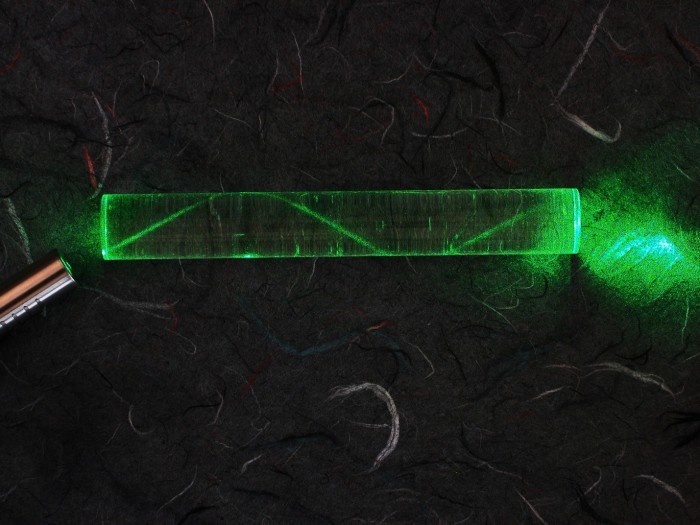Why We Can’t Live Without Fiber Optics
One of the many classes required for physics and space sciences majors at Florida Tech is Optics, the study of the behavior of light and how it has been used to further research and technology in the world. Taught by Dr. Ming Zhang this semester, I have found it very interesting, and one thing I had not really thought much about before was how much we rely on fiber optics these days. Dr. Zhang has mentioned it several times in passing as he explained more basic concepts to us, so I decided to look a little more into it, trying to better understand fiber optics and why they are important.
An optic fiber is a thin piece of glass or plastic that light travels along, similar to electricity traveling through a metal wire. That’s basically the gist of it. Fiber optics is simply another way we have figured out to transmit data or power.
WHY OPTICAL CABLE VS COPPER WIRE?
Using fiber optics has many benefits over a copper wire, some listed below.
- One fiber can carry 3 million voice calls or 90,000 TV channels (aka “broad bandwidth”)
- Optic cables aren’t prone to electrical problems as copper—optic cables don’t pick up other signals and they don’t conduct electricity (meaning they can be placed in a lot more variety of places and aren’t affected by a lightning strike).
- The light in the cables can travel much further without needing an energy boost (aka “low attenuation loss”). For example, the usual distance information can travel in copper wire without assistance is 100m (330ft), while in an optical cable it’s 2000m (6500ft).
- It’s harder to tap into information traveling along a fiber optics cable than down a copper one.
- They are also smaller, thinner, lighter, more flexible, and cheaper to make, making installation much easier (although installation costs are more than for copper wires).
HOW DO THEY WORK?
But how can we get light to travel along the core of a small strand of glass, especially if the cable doesn’t follow a perfectly straight line? Two basic concepts of optics are used to make this happen—the index of refraction and total internal reflection. The index of refraction, n, is different for every material, and tells how fast light travels through that material with respect to the speed of light in a vacuum (n=c/v, with c as the speed of light in a vacuum, approx. 3×108 m/s, and v as the speed of light through that material). Total internal reflection happens when the index of refraction of the material (nt for transmitted n) is less than the index of refraction of the surrounding material (ni for incident n), or in other words, nt/ni < 1. In plain English, total internal reflection is when none of the light goes through the material, but is completely reflected back, as shown in the diagrams below.


WHY DO WE CARE?
So what are fiber optics actually used for today? As I already mentioned earlier, it can be used for phone and TV cables. Those alone are a big deal, considering how much both are used nowadays. Other common applications include unmanned aerial vehicles (aka UAVs, civilian and military alike), smart highways (automatic traffic signals, for example), and some electric trains have started incorporating them, as well. And don’t forget about Christmas lights, of course. But an even bigger application is computer networking, the definition of which can be put as “a telecommunications network which allows computers to exchange data.” You may have heard of the most well-known computer network—the Internet. With fiber optics, we now have high-speed Internet able to transport gigabytes of data on a regular basis (and petabytes of data are probably in the not-too-distant future). For those of us who remember how annoying dial-up was, we have the application of light traveling through glass strands to thank! The picture below shows workers installing fiber optic cables under the streets of Manhattan; now imagine bigger, more numerous, and more insulated cables running under the oceans so we can transmit information nearly anywhere in the world. Crazy, right? Welcome to the 21st century, where the majority of us swear we can’t live without the Internet, and hence we can’t live without fiber optics and didn’t even know it!

References:
- “Optical Fiber.” https://en.wikipedia.org/wiki/Optical_fiber
- “Advantages & Disadvantages with Optical Fibres.” http://services.eng.uts.edu.au/~akadi/ite/major_assignments/barber/advdisad.htm
- “What Do We Use Fiber Optics For, Anyway?” http://www.cableorganizer.com/articles/fiber-optics-tutorial/fiber-optic-technology.html
- Optics by Eugene Hecht. 4th edition. Addison Wesley, Pearson Education, Inc. 2002.





